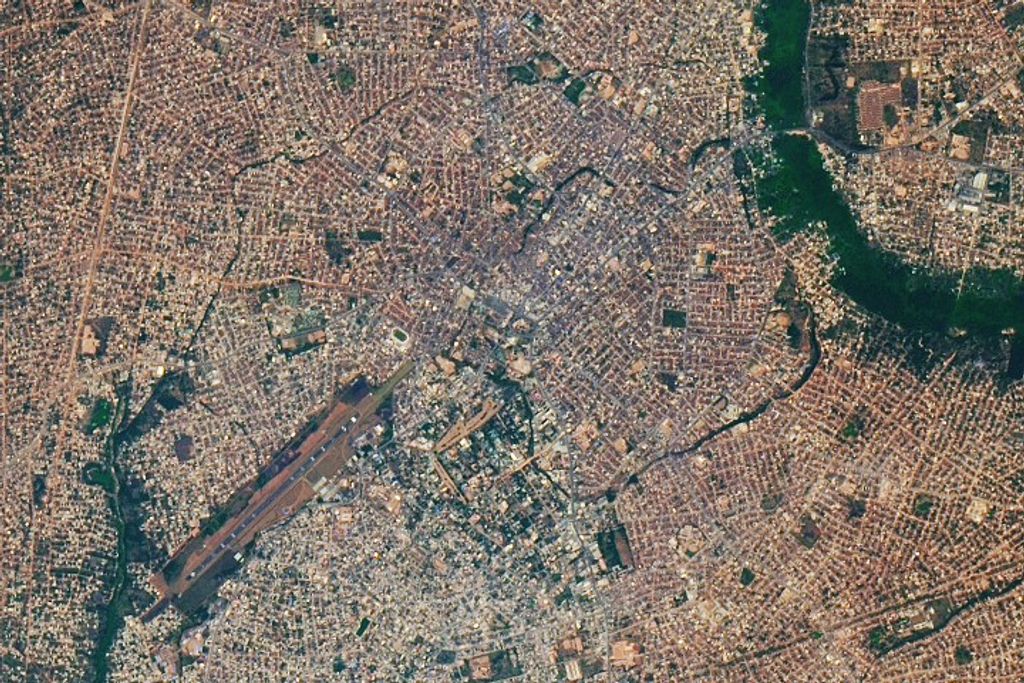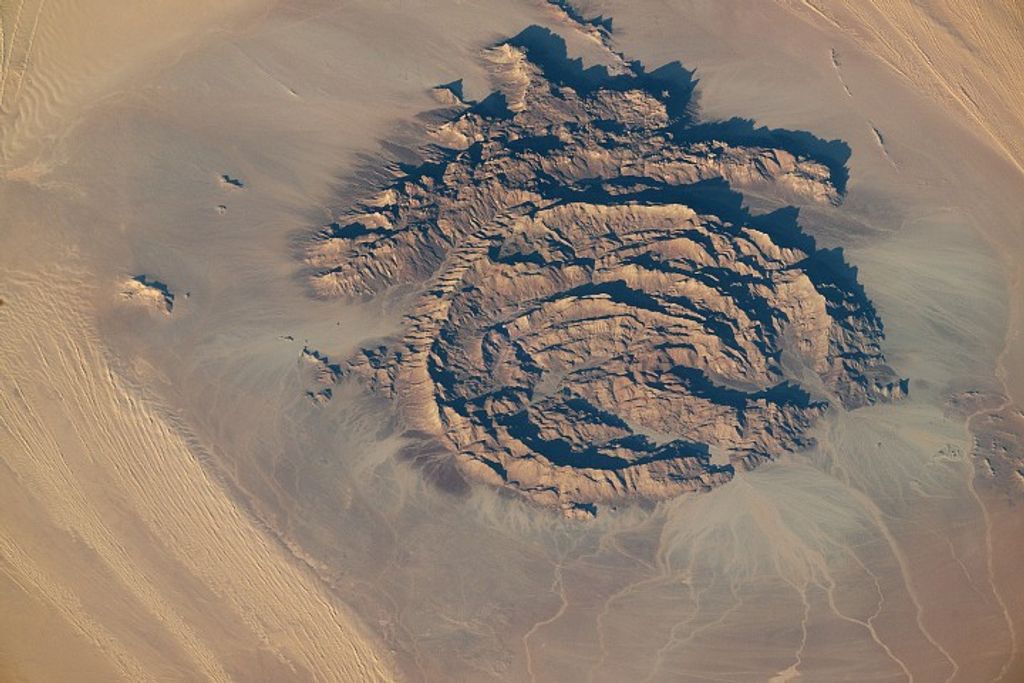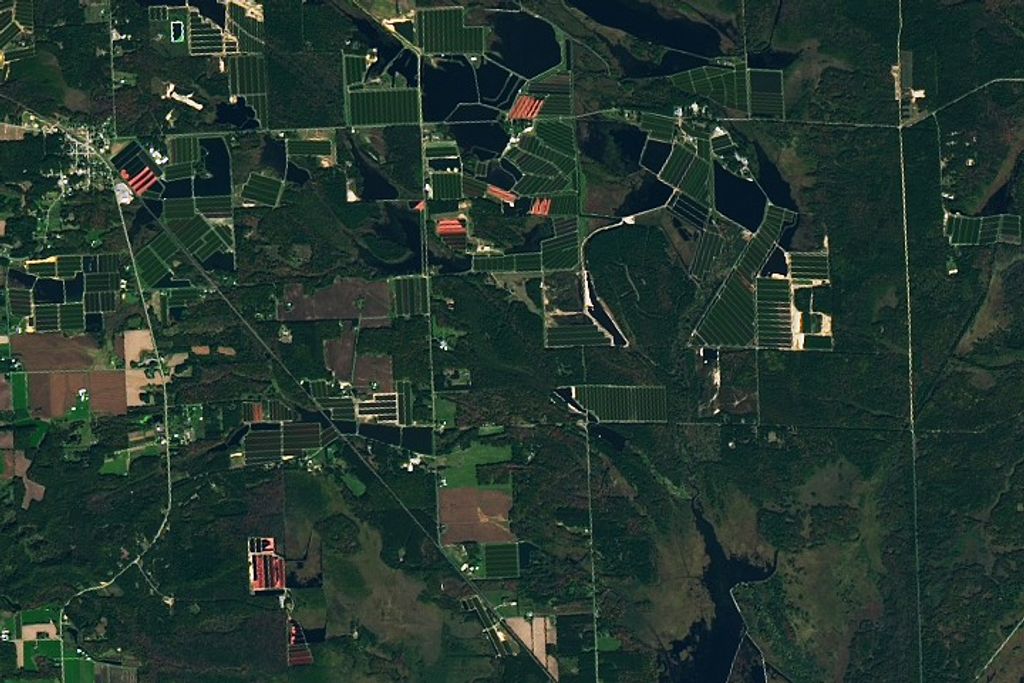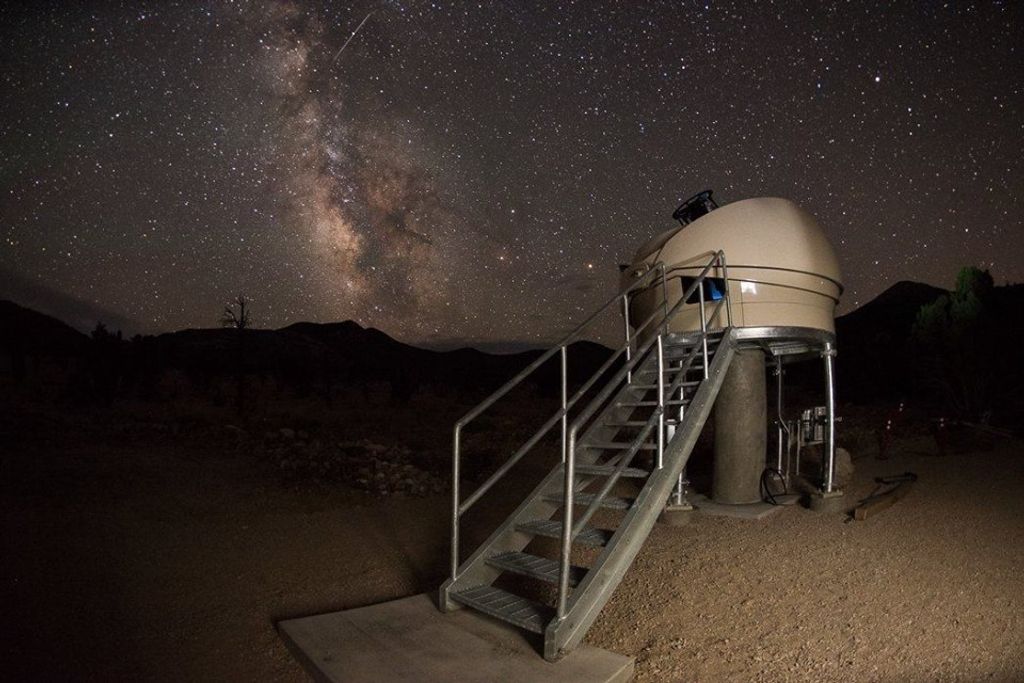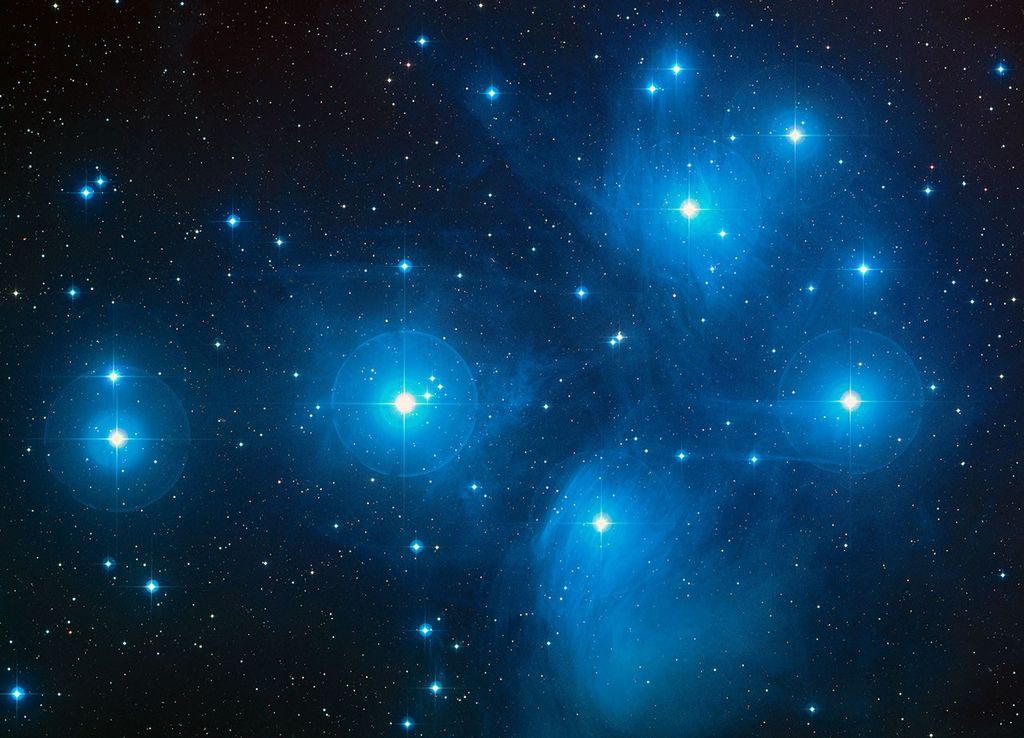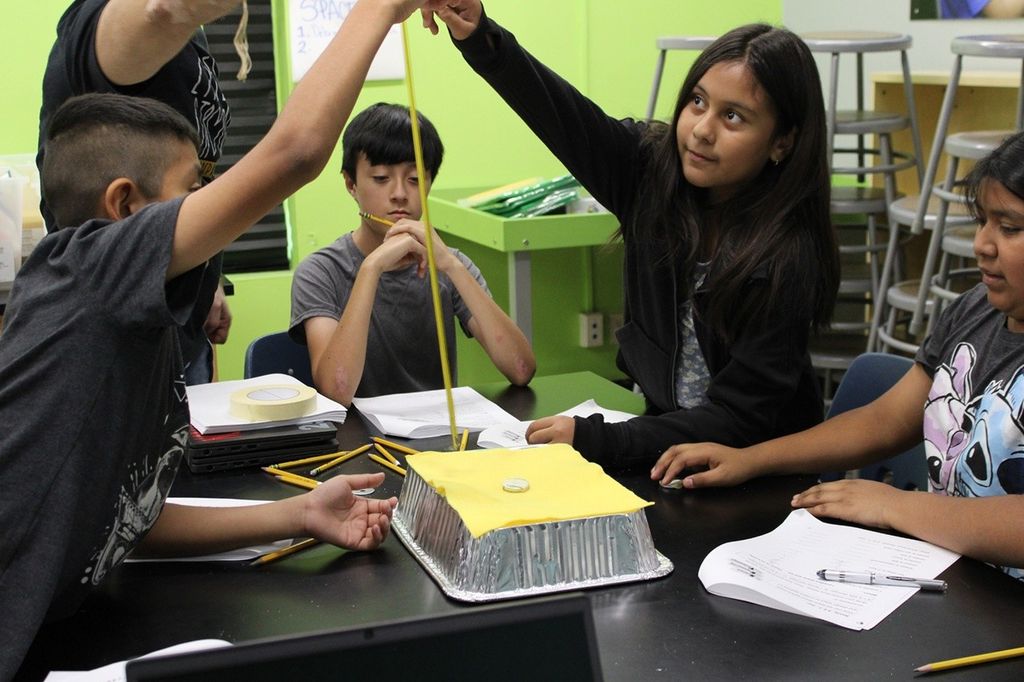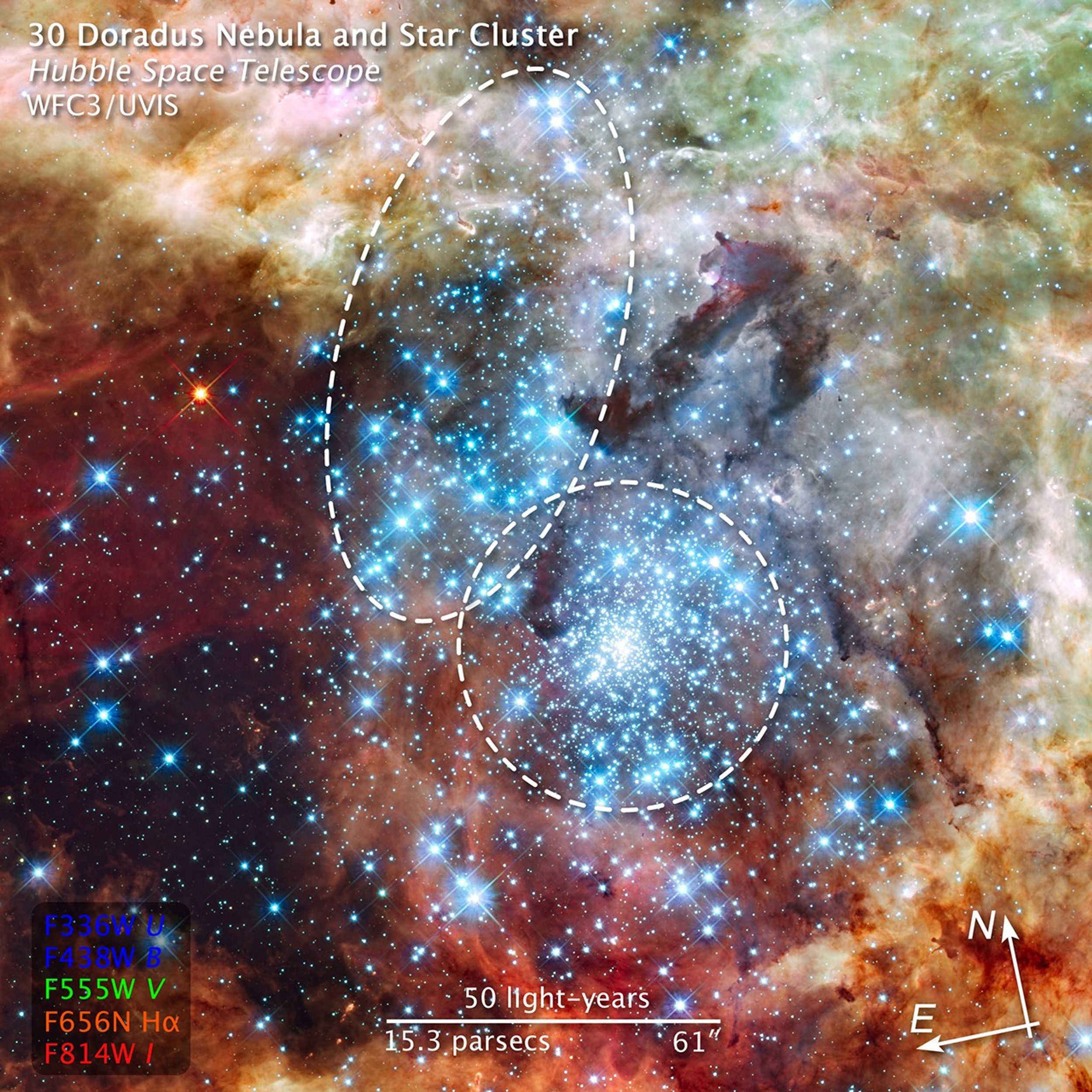1 min read
30 Doradus Nebula and Star Clusters
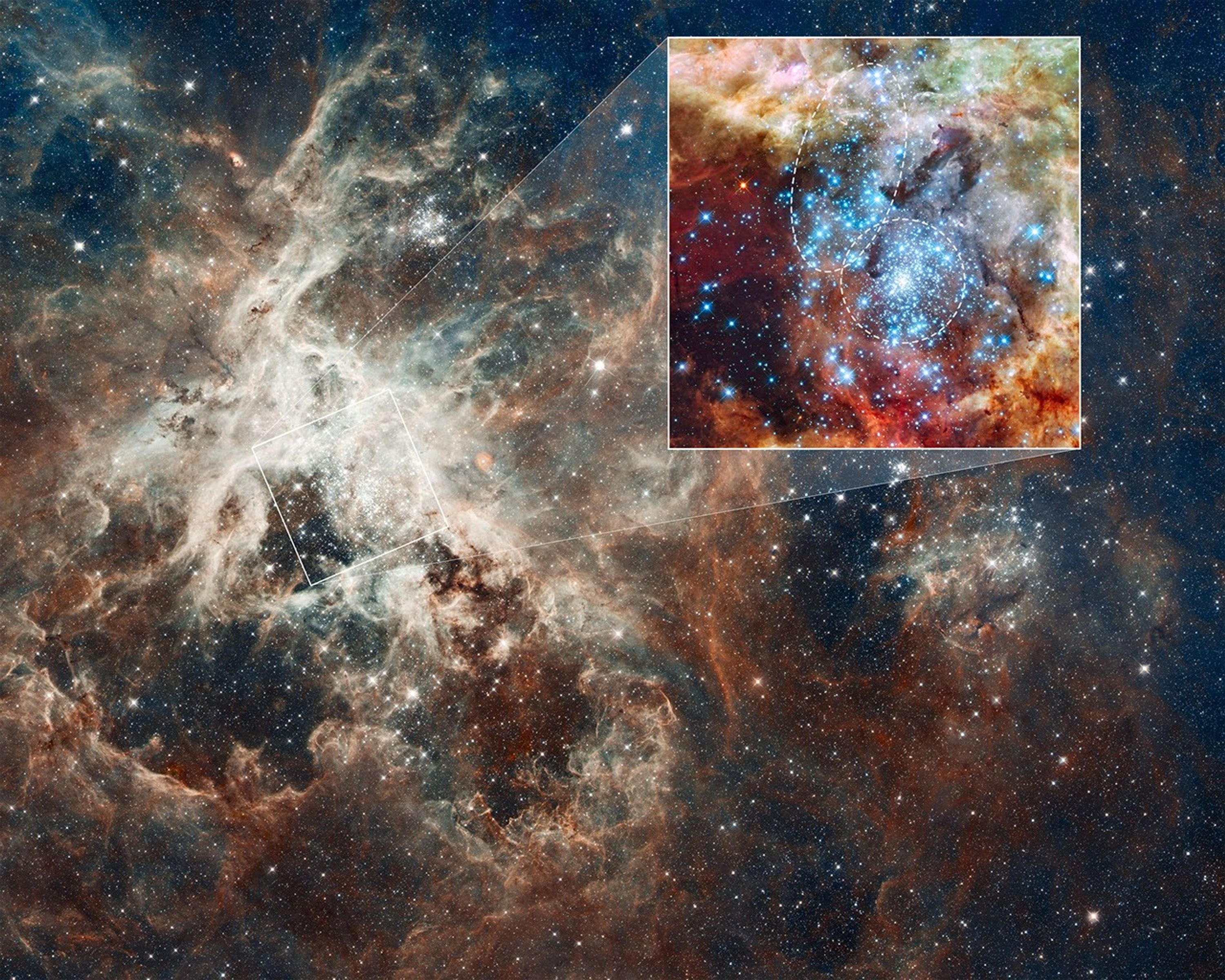
This is a Hubble Space Telescope image of a pair of star clusters that are believed to be in the early stages of colliding. The clusters lie in the gigantic 30 Doradus Nebula, which is 170,000 light-years from Earth.
Hubble's circumstantial evidence for the impending collision comes from seeing an elongated structure in the cluster at upper left, and from measuring a different age between the two clusters.
Also, there is an unusually large number of high-velocity stars expelled from the region. This is a normal byproduct of a process called core collapse, in which more-massive stars sink to the center of a cluster by ejecting lower-mass stars. However, both clusters are too young to have experienced core collapse. The ejected stars can be better explained if the two clusters are merging.
This nearby example of cluster interaction yields insights into how star clusters may have formed in the early universe.
The Hubble image at upper right was made with Wide Field Camera 3 observations taken Oct. 20-27, 2009. The blue color is light from the hottest, most massive stars; the green from the glow of oxygen; and the red from fluorescing hydrogen.
The colors in the wide-field image, made with Hubble's Wide Field Camera 3 and the Advanced Camera for Surveys, represent the hot gas that dominates regions of the image. Red signifies hydrogen gas and blue, oxygen. Hubble made the photo mosaic in October 2011.
About the Object
- R.A. PositionR.A. PositionRight ascension – analogous to longitude – is one component of an object's position.05h 38m 42.36s
- Dec. PositionDec. PositionDeclination – analogous to latitude – is one component of an object's position.-69° 6' 3.24"
- ConstellationConstellationOne of 88 recognized regions of the celestial sphere in which the object appears.Dorado
- DistanceDistanceThe physical distance from Earth to the astronomical object. Distances within our solar system are usually measured in Astronomical Units (AU). Distances between stars are usually measured in light-years. Interstellar distances can also be measured in parsecs.170,000 light-years (52,000 parsecs)
- Object NameObject NameA name or catalog number that astronomers use to identify an astronomical object.30 Doradus, 30 Dor, Tarantula Nebula
- Object DescriptionObject DescriptionThe type of astronomical object.Nebula in the Large Magellanic Cloud
- Release DateAugust 16, 2012
- Science ReleaseHubble Watches Star Clusters on a Collision Course
- CreditNASA, ESA, D. Lennon and E. Sabbi (ESA/STScI), J. Anderson, S.E. de Mink, R. van der Marel, T. Sohn, and N. Walborn (STScI), N. Bastian (Excellence Cluster, Munich), L. Bedin (INAF, Padua), E. Bressert (ESO), P. Crowther (University of Sheffield), A. de Koter (University of Amsterdam), C. Evans (UKATC/STFC, Edinburgh), A. Herrero (IAC, Tenerife), N. Langer (AifA, Bonn), I. Platais (JHU), and H. Sana (University of Amsterdam) Upper Right Image: NASA, ESA, R. O'Connell (University of Virginia), and the WFC3 Science Oversight Committee
Related Images & Videos
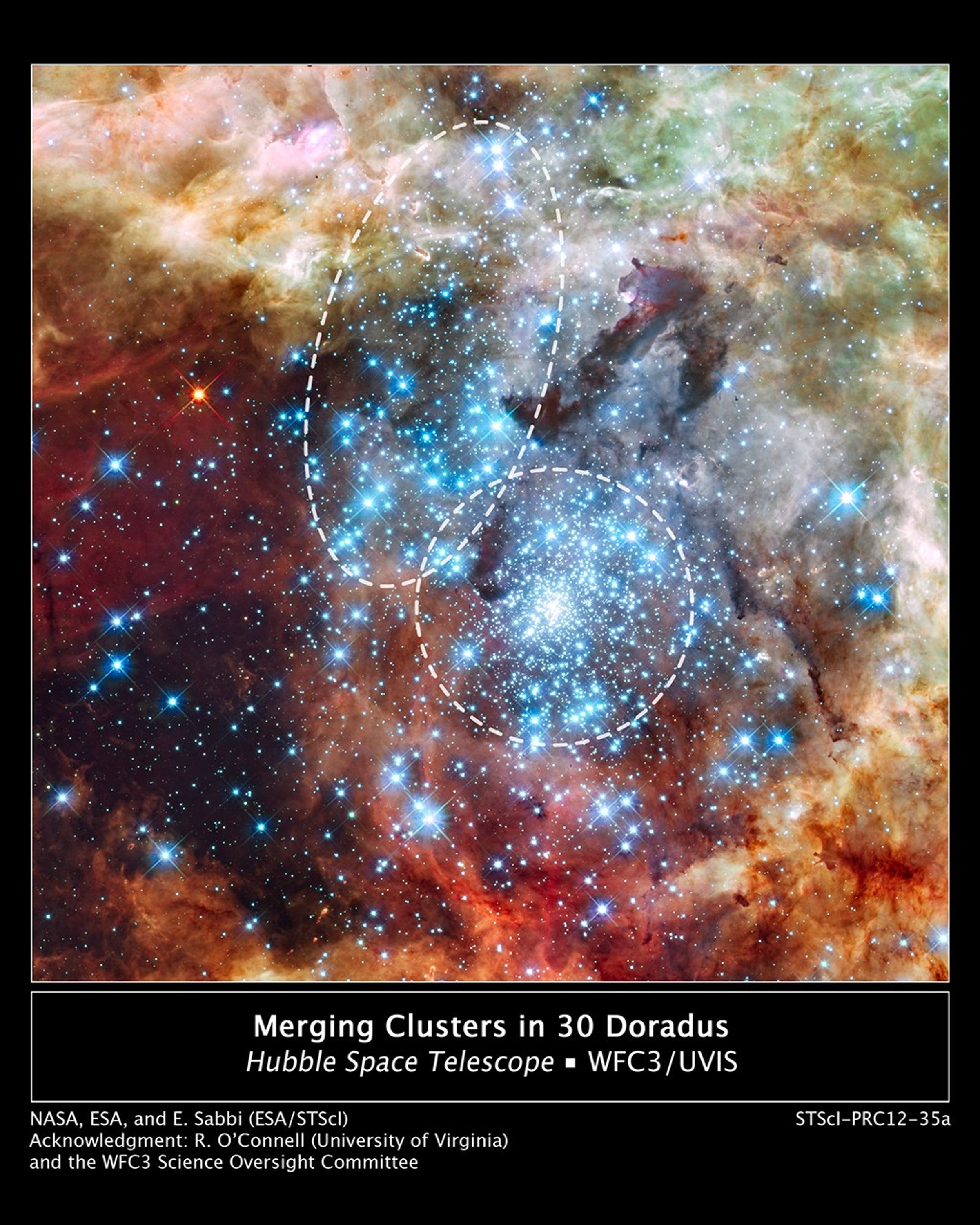
Merging Clusters in 30 Doradus
This is a Hubble Space Telescope image of a pair of star clusters that are believed to be in the early stages of merging. The clusters lie in the gigantic 30 Doradus Nebula, which is 170,000 light-years from Earth. Hubble's circumstantial evidence for the impending collision...
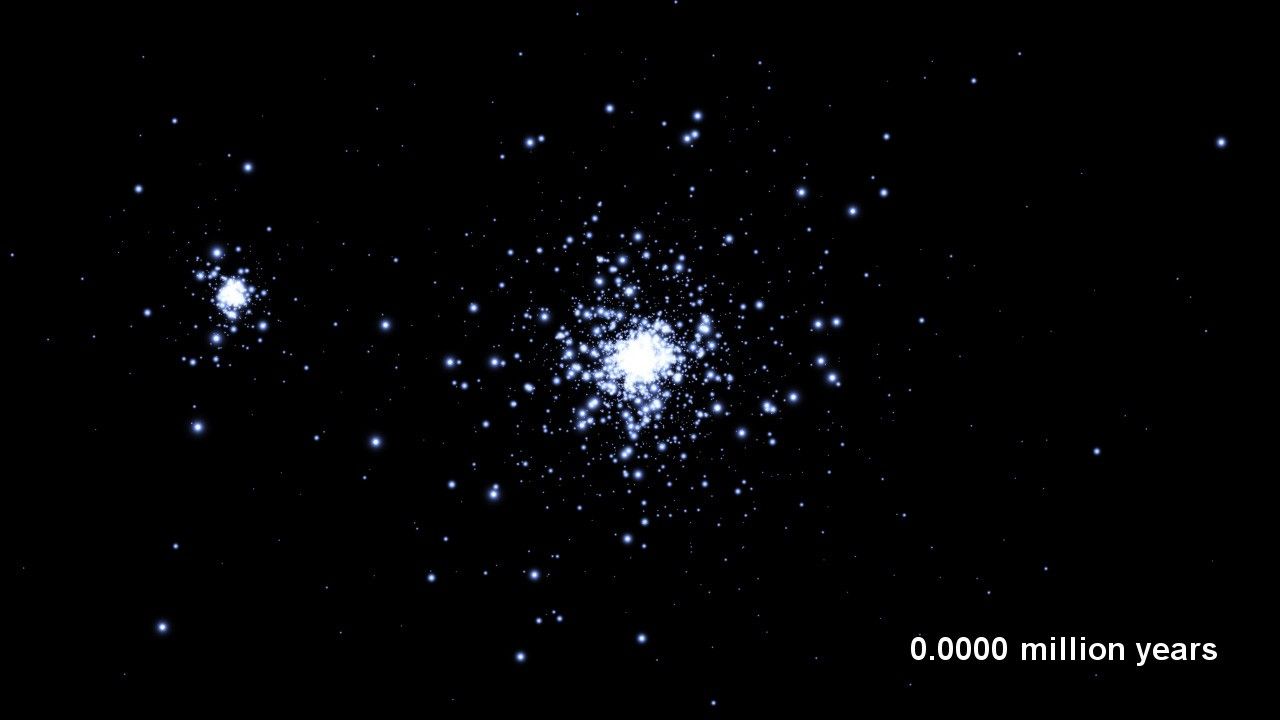
Simulation of Star Clusters Encounter (Annotated)
This computer simulation shows the gravitational interaction of two young star clusters in a nearby star-forming region. The three and a half million years of the encounter have been compressed into just 27 seconds. The smaller star cluster approaches from the left, has its...

Simulation of Star Clusters Encounter
This computer simulation shows the gravitational interaction of two young star clusters in a nearby star-forming region. The three and a half million years of the encounter have been compressed into just 27 seconds. The smaller star cluster approaches from the left, has its...
Share
Details
Claire Andreoli
NASA’s Goddard Space Flight Center
Greenbelt, Maryland
claire.andreoli@nasa.gov







